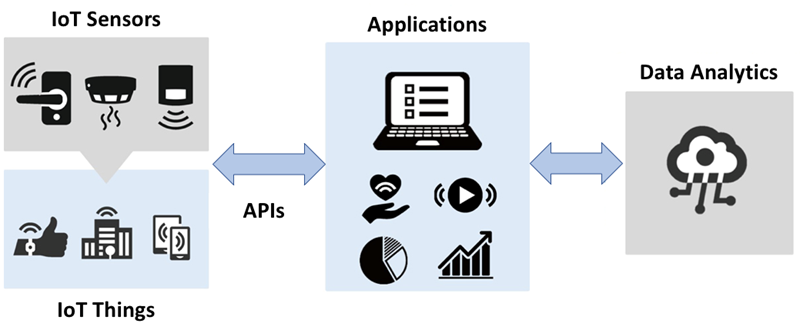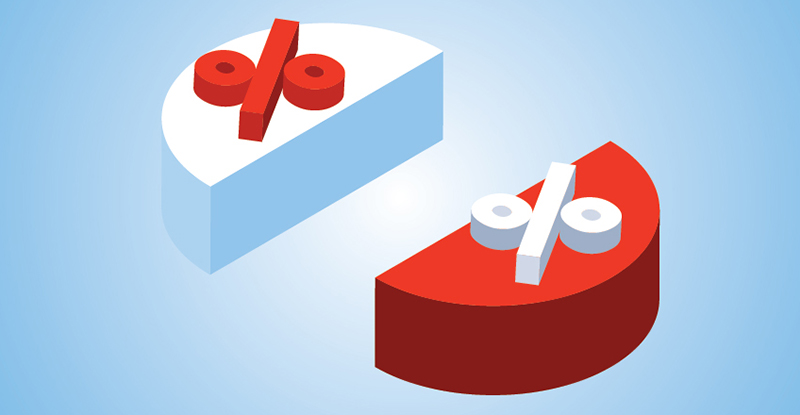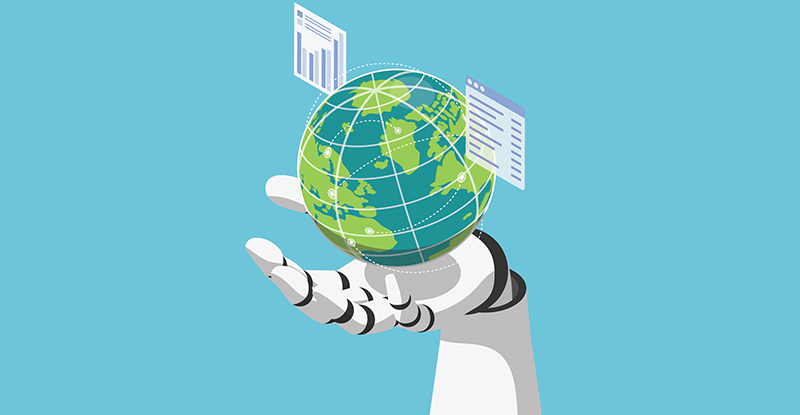
Listen to our podcast episode with this article's author John Hetherington, where he discusses ways in which accountants can use smart technology to thrive, as well as some of the risks to be cautious of. Hosted by CPABC's security engineer, Anthony Green. Part of our Coffee Chats with CPABC podcast series.
Imagine a future where audits can be done easily and quickly. All your ledgers, journal entries, donations, and other transactions are connected, sorted, and verified on the spot. Also imagine if tracking inventory is automated and every new equipment purchase is scanned, all the details are transmitted to your central database, and the invoices are approved and paid without any human interaction. How would it feel to have this future with less stress and more time back in your day?
While this may seem farfetched when you're currently faced with complex spreadsheets and missing data, this vision of the future is becoming a reality due to the internet of things (IoT), application programming interfaces (APIs), and data analytics. And although this new reality won't happen overnight, technology is changing fast and has been expedited due to the COVID-19 pandemic. As accounting professionals, we need to stay abreast of new technologies and how they can improve our accounting processes to better serve the needs of our clients.
So how will IoT, APIs and data analytics improve accounting? First, here’s an introduction to these technologies and how they work.
- Internet of Things (IoT)
IoT are Wi-Fi enabled devices that collect and send data over the Internet. For example, wearables like your Apple Watch or Fitbit, sensors on submersible pumps, Peloton bikes, and your mobile phones are all part of the IoT. These 'things' take thousands of measurements per second, consolidate data, and send this data to applications and dashboards.
- Application Programming Interfaces (APIs)
APIs are the glue that connects IoT devices to applications and dashboards so the data can be analysed. This can be as simple as using your Google or Facebook accounts to sign-in to another app, or more complex integrations, such as connecting an Enterprise Resource Planning (ERP) system to a mobile app that scans Radio Frequency Identification (RFID) tags on plant machinery. Most vendors supply pre-built APIs for common integrations, making it easier for end users.
- Data analytics
Data analytics is the key to unlocking the value of your data and using it to make better decisions. Once the data has been collected by IoT devices, translated by APIs, and collected into a database, the final stage is creating value from your data using analytics tools such as R, Python, or Excel.
For example, tax accountants can use data analytics to quickly analyze complex investment scenarios and auditors can shift from sample-based audits to continuous monitoring audits that look at much larger data sets, thus minimizing room for error
Bringing these three technologies together creates a data pipeline: IoT devices collect the data, APIs act as the translation layer, and data analytics present the data to the user and provide valuable insight.
Data pipeline

A good real life example is Rolls-Royce’s IntelligentEngine. The smart engines use IoT sensors to gather data that monitor and keep track of engine performance, and along with APIs and data analytics used to schedule preventative maintenance, Rolls-Royce is able to keep the engines healthy by servicing them on time and reduce unexpected plane downtime.
What are the biggest benefits for accountants?
-
Better, faster decision-making
IoT data sent to cloud storage can use artificial intelligence (AI) to analyze data on company financials and cross reference this information with business patterns and market research. For example, audit information can be consolidated with inventory data and the user can be automatically notified of applicable tax laws or the latest changes to accounting standards.
This helps accountants become trusted advisors and create more informed strategies to ensure their client’s business is running well, meeting goals, and maintaining or improving performance.
- Streamlined accounting
With IoT, APIs, and data analytics working together, financial transactions from any department can be automatically recorded in your ERP. This eliminates the need to chase down data from other teams and fix errors from inconsistent data entry.
As a result, collaborating with team members and collecting financial information from different departments will become more streamlined.
- Reduced manual effort in audits
With IoT and APIs, all transactions are tracked and sent to your ERP in real-time and are continuously being monitored, and therefore minimizes the need to dig through financial records when audits are approaching. Thus, the effort required for data-driven, population-level audits is significantly reduced and data entry errors are virtually eliminated.
What are the downsides?
Accounting professionals generally trust ERP systems because they know how these systems work and are aware that there are internal controls in place to manage risk. Another element of reassurance is that numbers come from known data sources. But if data is delivered through APIs from thousands of IoT devices, what happens if one of these devices is hacked, or the API sends corrupted data to your ERP?
Since IoT devices are connected to the Internet there is always a risk they can be hacked. Each IoT device is an entry point to your company’s network, so the more devices connected, the greater the chances of your network being infiltrated.
For example, in 2016, a cyber security researcher hacked into the light switch controls of his London UK hotel room. From there, he gained access to the hotel lighting control system and could observe which hotel rooms had its lights off, indicating that guests were out and making the rooms vulnerable to theft.1
Similarly, since APIs manipulate and transmit corporate data, if a hacker gains access to your APIs, they can also access its data and therefore read and modify it. To reduce risk, most APIs are secured using strict access controls that limits access to specific admin users. API access can be further secured by using expiring access tokens so that even if an API is compromised, the token can be set to expire, preventing hackers from gaining access.
Accountants need to be aware of the cybersecurity risks that come with using IoT and APIs and be prepared to mitigate and manage these risks. A first step would be having a cybersecurity policy in place that ensures the use of strong passwords and IT controls that keep software updated.
So what does all mean for accountants?
Although the implementation of IoT, APIs, and data analytics may be a distant goal in your organization’s future, it's important to be aware of the pros and cons of using these technologies and look for opportunities where these technologies can improve your accounting processes.
Responsible use of IoT, APIs, and data analytics can help accountants uncover valuable insights within their financials, identify ways to make better decisions, and manage risks. Furthermore, using these technologies can make it easier for accountants to add value to organizational decision making and strengthen business partnerships.
Call to action
Where do you see opportunities to improve your accounting processes by streamlining the flow of data using IoT, APIs, and data analytics? What steps can you take to help mitigate the risks?
Author
John Hetherington helps business leaders when they see the huge opportunity of technology but are frustrated with slow progress or overly complicated projects. John has led technology projects for over 25 years and is an expert in digital change. He has 10 years strategy consulting experience from Deloitte and Ernst & Young and has worked in the technology industry both in the UK and North America.
1 Information Age, March 2016.



